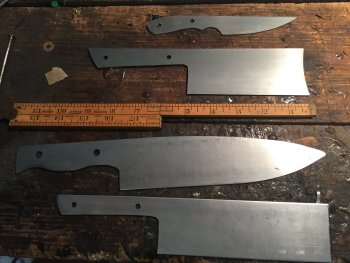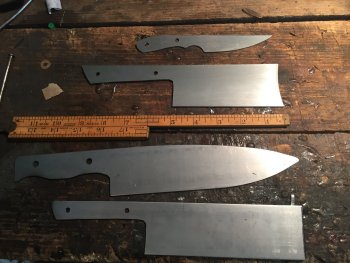I start at 60 grit ceramic on steel that thick. If it was a little folder, sure- 120 would be fine. But remember that you aren't just knocking off the corner of the thickness. Once you create a flat bevel on an 8 inch chef knife- that's a whole lot of steel to remove. There is a tremendous amount of blade surface area that is in contact with the belt. It won't cut as fast as you expect it to.
I use 60 until my bevel is ground up to at least half way. (about the level of the handle pins) Then you can switch to 120 ceramic to make sure that you get down past all the 60 grit scratches. I complete all of my cuttng at 120. Then I'll surface condition the blade to 220grit to get it ready for hand sanding.
The more familiar you get with doing thin steel, the farther you can take the knife with higher grits. The steel you use also matters. Stainless that is already heat treated will make you want to stick to the courser grits longer. Carbon steel grinds like butter by comparison, and you will want to get to a finer grit before the grinder eats the blade.



